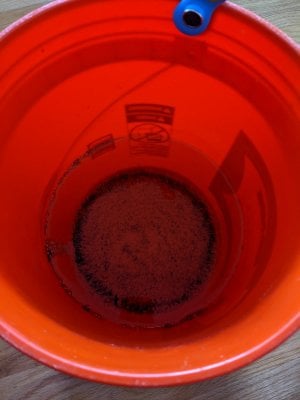- Joined
- Oct 12, 2016
- Messages
- 83
- Reaction score
- 76
I’d like to preface this post by saying that I have scoured reef forums for answers and found that others had similar symptoms with LPS decline, but everyone had different setups and parameters. And there were no conclusive findings. I hope by laying all the information out up front someone will be able to point me in the right direction.
Issue:
Equipment:
Critical Parameters (tested 10/7/2020):
Fish Stocking List:
Notable Events:
Potential Hypotheses:
Next Planned Steps:
Thank you for reading my novel. Hope someone can help.
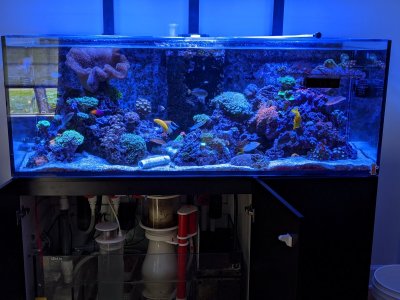
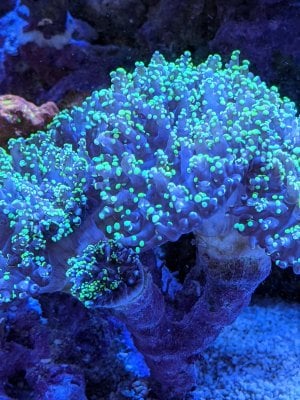
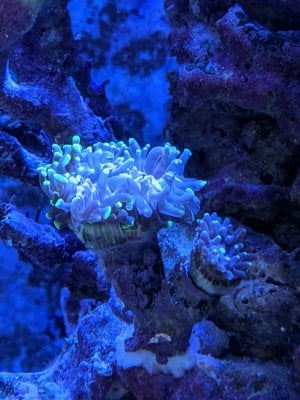
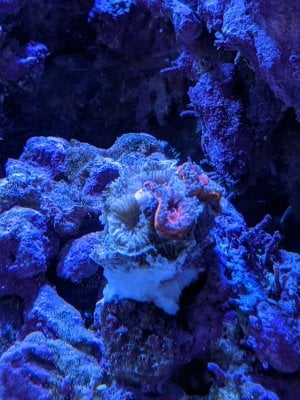
Issue:
- Slow systematic decline and demise of all LPS. Started with a series of euphyllia dying presumably due to brown jelly. 2 Octospawn and 2 torches.
- Acans then started to show signs of stress. Starting on one side of the coral head by head would shrink and then slowly slough off the skeleton. Then onto the next closest head, then next closest coral. Wiped out about 10-15 acan frags and small colonies. Only a few in random places have been spared so far. I have tried the usual dips as well as an iodine bath. No pests were removed. There is no brown jelly. Heads just shrink and fall off while the remaining heads are open, feeders out and accept food.
- No fish/snail/crab deaths other than an occasional wrasse victim.
Equipment:
- RedSea Reefer 525XL (Running 1 year and 10 months)
- 3 Hydra 26 HD Was running AB+ at 75% of suggested values
- Two MP40QD’s running at max 35%
- Vertex Omega 180i skimmer
- DOS AWC: 2.6 gallon change daily (50G reservoir replenished every 2.5 weeks)
- Salt: Combo Blue and Black Red Sea and have been alternating in Fritz blue.
- Tunze ATO w/ 20G reservoir
- Air Water Ice 6 stage RODI Prefilters and DI changed on schedule. Always 0 TDS water.
- Chaeto refugium w/ Kessil 160. Located in chamber before filter socks. Not ideal, but I get tremendous chaeto growth. Pulling volley ball size amounts out every two weeks
- Kalk Reactor which was taken offline mid September because Soda Ash alone was meeting my consumption needs.
Critical Parameters (tested 10/7/2020):
- Temp – 79.5 - 80
- pH – 8.15 to 8.24 summer windows open 8.04 to 8.14 winter
- ALK – 8.0 (Hanna) Consistently +-.05 of 8.0
- Ca – 405 ppm (Red Sea Pro)
- Mg – 1440 ppm (red Sea Pro)
- PO4 - .09 (Hanna Phosphorus ULR) Consistently between 1.1 and .07 use GFO to regulate
- NO3 – 32ppm (Red Sea Pro diluted method) Nitrates always this high or greater
- NH3 – 0 untraceable (API test)
- GAC swapped monthly
- GFO swapped when phosphates are above .1
- Soda Ash 10ml daily
- Various trace elements + Iodide (Value was 0 on ICP test 9/14/20)
- NOPOX 8ml daily
- MB7 half dose (1 cap) weekly
- Fish: Mysis/Krill 2 cubes in morning, LRS 1”x1” LRS in evening w/ Selcon & Garlic
- Coral: mixture of Reefroids/Gonipower/Benepets/other mixed w/ Coral Amino. Directly fed weekly
Fish Stocking List:
- Yellow Tang (Large)
- Foxface (Large)
- Tomini Tang (small)
- Blue jaw trigger (small)
- Clown (med)
- Striped blenny (small)
- Neon Goby (small)
- Sleeper Goby (Med)
- Yellow watchman Goby (small)
- Royal Gramma (small)
- Talbots Damsel (small)
- Domino Damsel (Med)
- 2 x Yellow tail Damsels (small)
- Algae Blenny (small)
- Purple Dottyback (small)
- Neon Wrasse (small)
- Christmas Wrasse (med)
- Melanarus Wrasse (med)
- Checkerboard Wrasse (med)
- Yellow Coris Wrasse (Med)
- Seagrasse Wrasse (Med)
- Fairy Wrasse (Med)
Notable Events:
- April 2020: Noticed light mounts were corroded near the waterline with black paint flaking off into the tanks. In September I sanded them down with a wire brush and repainted with rustoleum.
- April/May 2020: Decline and demise began
- May 2020: Aiptasia infestation really started to take off. Was using Aiptasia X as well as the Tropic Marin product
- July 2020: Salinity dropped from 1.025 to 1.019. My AWC supply line was blocked from salt sediment. Water continued to be removed from tank and was replaced with ATO. Increased salinity over the course of 1 week.
- August 2020: ALK increased to 10.4 from 8.5. This occurred over time due lack of maintenance and testing. No immediate casualties.
- August 2020: Added Berghia Nudibranchs. Haven’t seen one, but have noticed the aiptasia population slowly declining.
- ATI ICP test performed: High NO3 – 30.10 mg/l (reference 2mg/l), elevated Chrome 4.02 ug/l (reference .48ug/l), very low iodine 14.9 ug/l (reference 62.57 ug/l), Aluminum 6.57 ug/l (reference .1ug/l)
- October 2020: No fish deaths this year, but just noticed Fairy Wrasse with white feces, not eating and now hiding in the rock. All other fish acting normally.
Potential Hypotheses:
- Bacterial infection and or an imbalance of good and bad bacteria
- Nutrient issues: High Nitrate or imbalance between Nitrate and Phosphate
- Tank Overstocked
- ALK swings (although has remained consistently between 7.7 and 8.5 for several months)
- Switching Salts frequently between Fritz and Red Sea Blue (however they have almost identical numbers)
- Light mount corrosion added contaminates to the tank in form of Chrome. This coincided with the beginning of the coral decline.
- Lighting/flow too high or too low
- Chemical Warfare: Have a giant toadstool probably 10-12 inches around.
Next Planned Steps:
- Add bacteria: Dr. Tim’s Waste Away Gel and Eco Balance Added at quarter or half dose. Also add PNS Probio probiotic to encourage “good” bacteria growth
- Triton NDOC or Aqua Biome testing to determine bacterial make up of tank.
Thank you for reading my novel. Hope someone can help.




Last edited:






